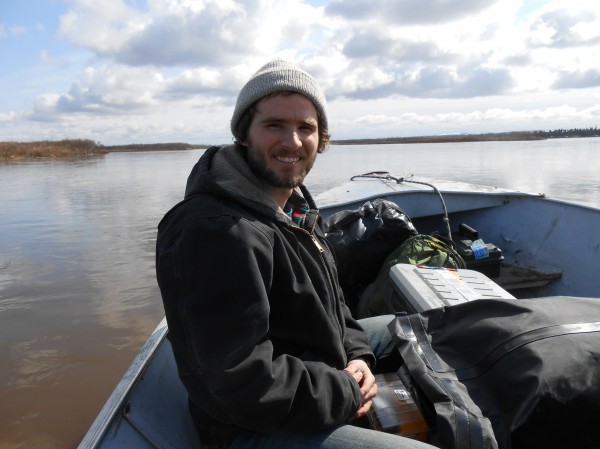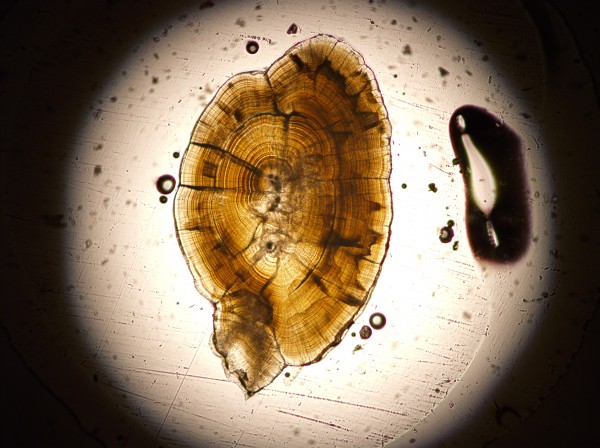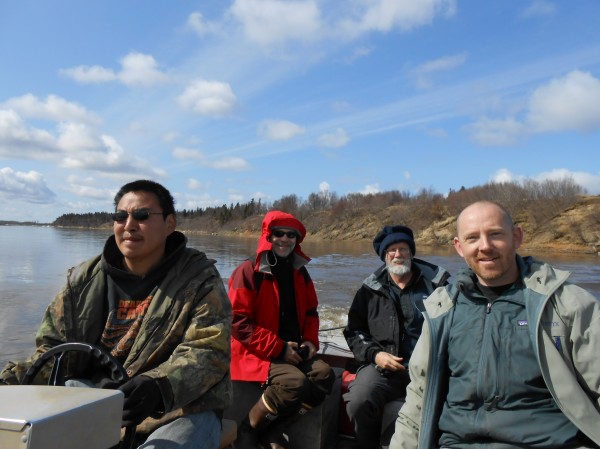Student's strontium isotope project offers a new map of Alaska
April 9, 2014
907-274-9698
03/28/2014

If you catch a salmon in the Nushagak fishing district of Bristol Bay, Ph.D. candidate Sean Brennan at –‘”˚…Á could probably tell you which part of the region's expansive river system it came from. His method uses not telepathy but strontium isotopes.
Brennan is finishing up a 2.5-year Alaska Sea Grant–funded research project, creating a tool to identify the birthplace of adult salmon harvested in mixed-stock commercial fisheries. The project is focused on chinook salmon in the Nushagak River, but it has implications for other rivers across the state. Brennan is launching a new method of mapping Alaska.
The tool is the ratio of two different isotopes of strontium, a chemical element found naturally in the earth. The diversity of rock types, their ages and how they weather creates variation in the strontium isotopic composition in the environment, which is transferred into the river water as it passes over bedrock.

To track salmon, Brennan removed otoliths from chinook salmon incidentally caught during the commercial sockeye fishery in Nushagak Bay. Otoliths are the auditory structure in fish, which are similar to tree rings. The center rings of the otolith represent the fish’s young life, and the outer rings represent its older life. The otolith is composed of chemicals — including strontium — from the water where the fish live. By matching the isotope signatures from the early stages of the otolith with the strontium isotope map he has developed, Brennan can pinpoint the exact area and sometimes the tributary stream where each salmon was born. “It’s the difference in geology that then allows you to chemically fingerprint the river they came from and were headed back to,” said Brennan.
Brennan came up with this project idea before applying to graduate school. He was inspired by work with the isotope tracer in the Lower 48 states that was published in 2008.
“We submitted quite a few proposals,” said Brennan, “and are thrilled that Alaska Sea Grant was interested in funding this project.”

The Nushagak region is geologically diverse and produces some of the world’s largest wild salmon runs supporting subsistence, sport, and commercial fisheries in Bristol Bay.
Brennan also gives credit to the University of Utah, where he earned his undergraduate degree and where he does his lab work under the guidance of two Utah advisors, professors Diego Fernandez and Thure Cerling. At the start of the project, Utah was just building a state-of-the-art facility to study strontium isotopes in both liquids and solid materials. –‘”˚…Á did not have an isotope lab at that time. However, a new engineering building is under construction at –‘”˚…Á, and it will house the new Alaska Isotope Facility.
Matthew Wooller is Brennan‚Äôs major adviser and a –‘”˚…Á professor at the Water and Environmental Research Center in the Institute of Northern Engineering and the School of Fisheries and Ocean Sciences. He is very excited about the research work because he feels it is the cutting edge of a new way to view Alaska.

“Salmon migration is very interesting to me,” said Wooller. “And there are broader applications, such as strontium isotope maps of Alaska that are coming down the pipeline. I’m one of the potential users, standing in the wings ready to use Sean’s research in further applications.”
Brennan’s long-term goal is to develop a strontium isotopic baseline database of all potential natal and rearing sources for salmon, especially chinook salmon. By integrating strontium isotope information with other useful tags, such as genetics, scientists may be able to determine the natal streams of salmon caught in the ocean using these baseline databases.
“Sean’s a remarkable fellow,” said Wooller. “He’s done remote fieldwork that you could only do if you come to Alaska. He’s floated from the headwaters of the Nushagak all the way down and has networked and established great relationships with Alaska Native communities and residents in that region.”
Brennan said every time he was in a community he would give a presentation or talk with students. He wanted to connect the research world with the cultural world.
Brennan is on track to present his dissertation and receive his doctorate in 2014 from –‘”˚…Á‚Äôs School of Fisheries and Ocean Sciences.
"It’s a very significant contribution by a graduate student to better understand the bio-geo-chemistry of Alaska," Wooller said, “I think there are a lot of people that will be interested and pleased that his research findings are out there.”
ADDITIONAL CONTACTS: Sean Brennan, sean@threepin.org, or Matthew Wooler, mjwooller@alaska.edu.
NOTE TO EDITORS: Photos are available for download at .
ON THE WEB:
DM/3-28-14/253-14


